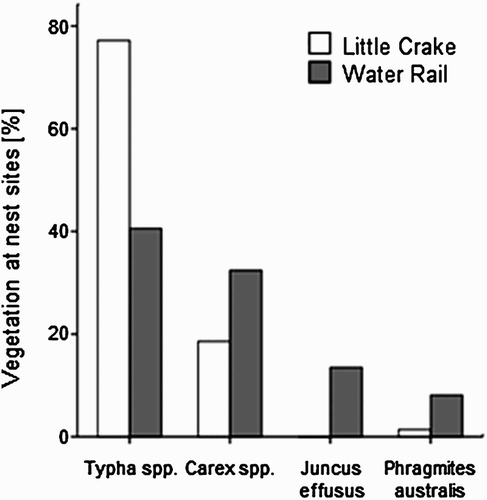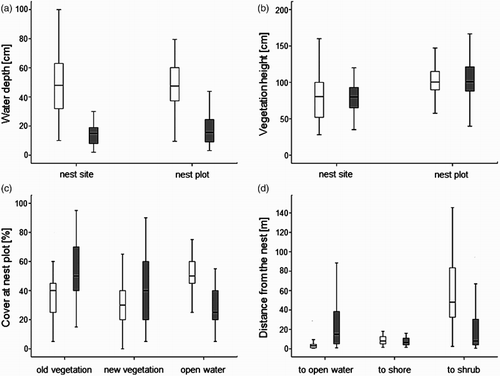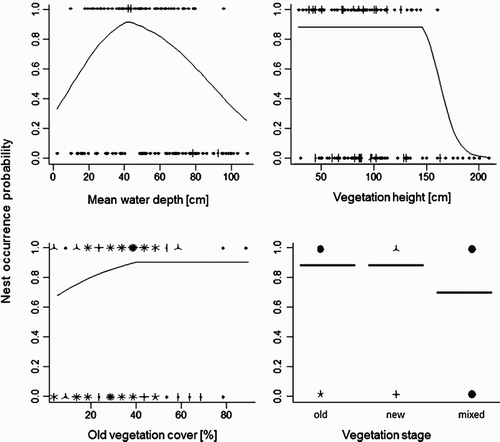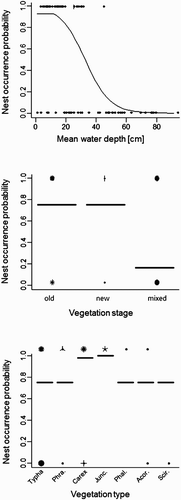Figures & data
Figure 1. Frequency of the most common vegetation types at nesting sites of Little Crake and Water Rail.

Figure 2. Comparison of habitat variables at nesting sites and nesting plots (area within 3-m radius around nest) of Little Crake (white box plots) and Water Rail (grey box plots): (a) water depth at nest site and mean water depth at nest plot; (b) vegetation height at nest site and mean vegetation height at nest plot; (c) percentage cover of old and new vegetation, and open water cover at nest plot; (d) distances from the nest to the nearest shore, open water and Grey Willow shrub. The band inside the box represents the median and whisker plots represent range of values without outliers.

Figure 3. Graphical summary of the MARS model for nesting-site selection in Little Crake. Species–habitat relationships show the probability of nest occurrence in relation to mean water depth (cm), vegetation height (cm), vegetation stage (old, new, mixed) and percentage cover of old vegetation (% cover in the 3-m radius around the nest). Sunflower plots (upper row: nests; lower row: random points) are also shown in each graph.

Table 1. Summary of selected MARS models (see text and Supplementary online material) for the two studied species.
Figure 4. Graphical summary of the MARS model for nest-site selection in Water Rail. Species–habitat relationships show the probability of nest occurrence in relation to mean water depth (cm), vegetation stage (old, new and mixed) and vegetation category (in the order: Typha spp., P. australis, Carex spp., J. effusus, P. arundinacea, A. calamus and S. sylvaticus). Sunflower plots (upper row: nests; lower row: random points) are also shown in each graph.

